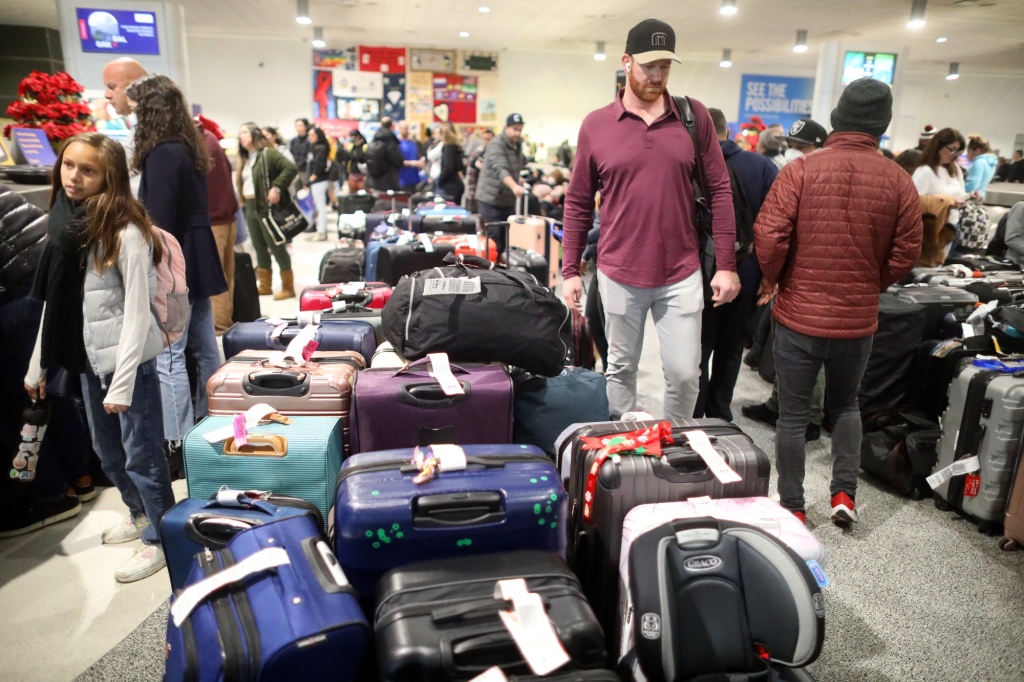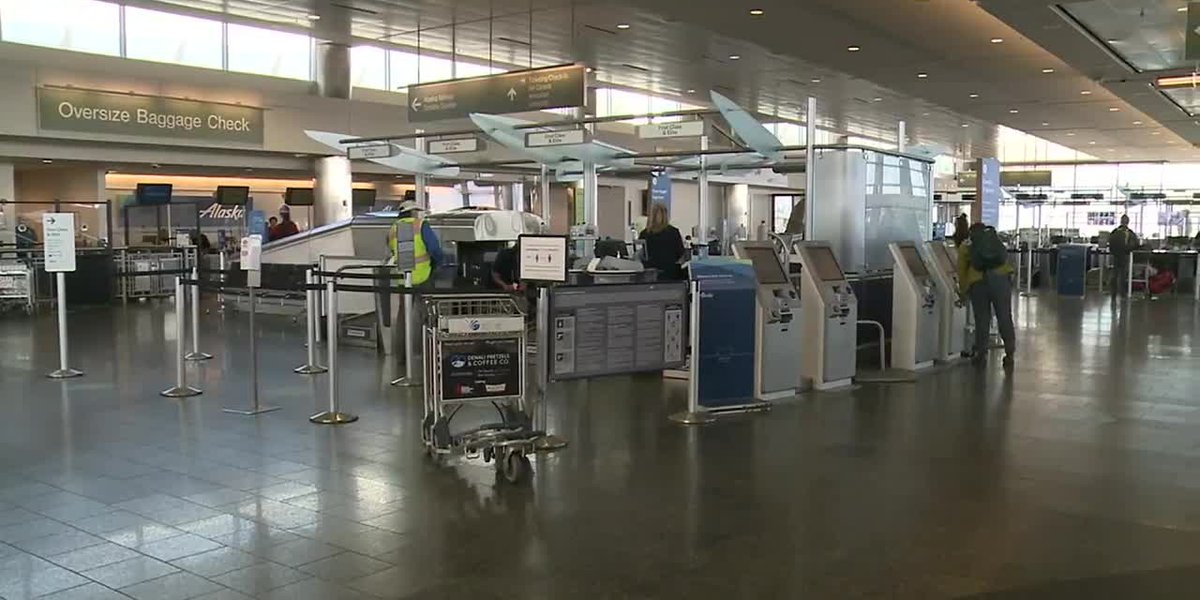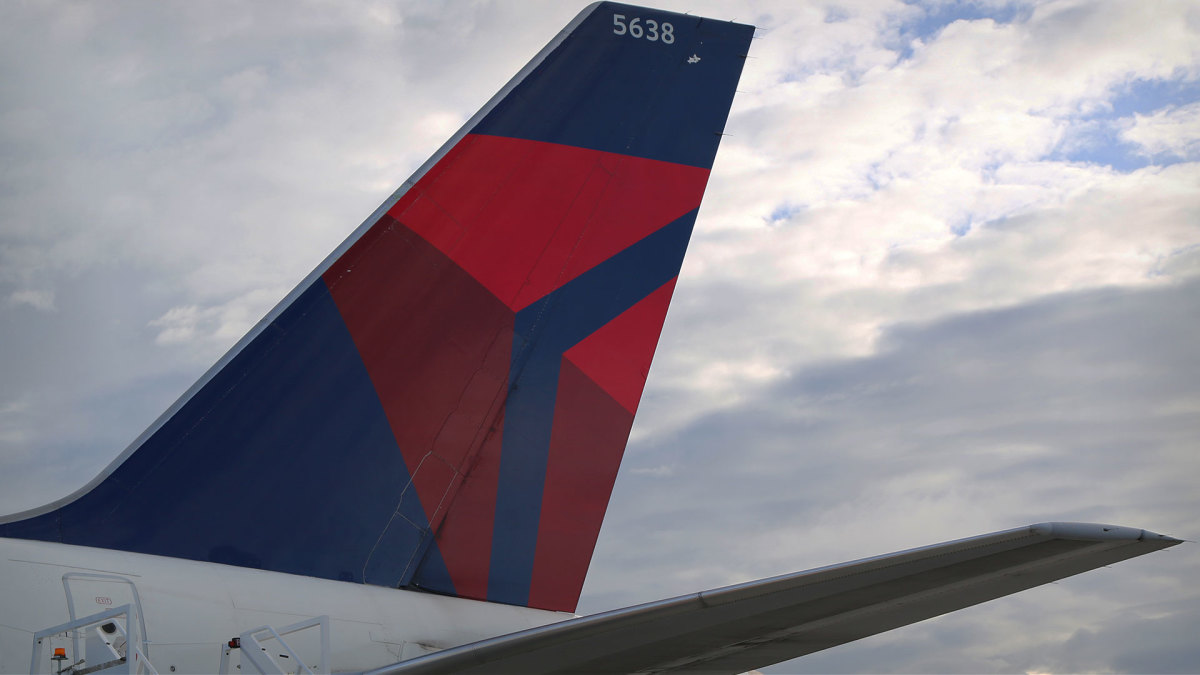[ad_1]
On Tuesday morning, before the sun rose over the Bay Area, Tracy Hurst was battling torrential rains and howling winds on a 10-hour journey from Portland to rescue her mother. Ita M. Kelly, 78, was stranded at the Oakland airport for five days, left hanging by a full-blown meltdown at Southwest Airlines, and her daughter was not going to let her spend another night alone.
“I’m feeling blessed that we were able to get her because she was about to be in Oakland potentially to December 31st,” Hurst said Tuesday morning on the tail-end of a whirlwind 20-hour drive. Kelly, who is diabetic and suffers from bad knees, was traveling from New Orleans when she landed in Oakland only to find out that her connector flight to Portland was canceled. That left her stuck in Oakland since Thursday without a credit card. At the airport, she was confused and hit walls as she scrambled for answers.
“I was abandoned,” said Kelly. “Nobody reached out to me to help.”
The lack of communication was so bad that Hurst took to Twitter to seek answers, prompting a response from the Oakland International Airport. “I was asking ‘can you check on her? Can you get her a wheelchair and maybe potentially put her in a sky lounge,’” said Hurst. “They offered to help and then they didn’t respond.”
Hurst’s experience with Southwest is not out of the norm. While a massive Christmas-weekend storm devastated air travel across the country, Southwest’s woes have snowballed into a staggering collapse that triggered a probe by the U.S. Department of Transportation, which called the rate of cancellations “disproportionate and unacceptable.”
At Mineta San Jose International, Southwest canceled 152 flights – 76% of scheduled air travel – by Tuesday morning. Oakland International saw 57% of Southwest flights canceled. San Francisco International Airport also saw the majority of Southwest flights canceled, however, the airport is not a major hub for the Dallas-based airline.
Lines for customer service at San Jose airport. Southwest terminal 1. Both inside the terminal and customer service at baggage drop. In addition, your phone doesn’t work, I get dropped 4 hours after being in hold. Unacceptable. Canceled on 3 times. Supposed to leave on Christmas. pic.twitter.com/a9vmpljOk3
— Gordon Chow (@GordoChow) December 27, 2022
Kathleen Bangs, an air travel expert at Flight Aware, said the Southwest network is more susceptible to delays because of a larger amount of “short-haul” flights, which create more frequent plane turnarounds at airports.
“Every time they stop, they’ve got to do a turnaround it’s like an IndyCar Formula One pit crew comes out that fuels and cleans the airplane,” she said. “You couple that with weather and so many employees out sick . . . all of this coalesces to create this problem.”
But Southwest employees said the heart of the company’s meltdown was outdated scheduling software. “It can’t handle the number of pilots (and) flight attendants that we have in the system with our complex route network,” Mike Santoro, vice president of the Southwest Pilots union told CNN. “We have been telling them this for years. We have a meltdown like once a year for the past five or six years.”
It has become clear that Southwest is suffering a disproportionate disruption compared to other airlines. Of the approximately 2,950 flight cancellations in the U.S. by midday Tuesday, 2,549 were called off by Southwest.
The travel chaos, which Santoro called the largest disruption he had ever seen, forced people to be stuck for days around the country. Locations like Washington, DC, far from the epicenter saw one-way flights from the nation’s capital to the Bay Area surge to over $1,500 for mid-week travel on competing airlines, as remaining Southwest flights remained booked full through the New Year.
“I’m lost for words right now,” said Ngoc Le, who flew from Denver to the Bay Area. Le was stuck in Denver for 19 hours as Southwest kept canceling his flights. On top of the delays, Southwest lost Le’s luggage. “I couldn’t contact Southwest at all,” she said. “This is the worst experience.”
Piles and piles of bags at OAK airport this morning. And yet, many passengers arriving to the Bay Area after hours, days of delay say their bags are still not here. pic.twitter.com/KIZH6vIvrx
— Scooty Nickerson (@DavidANickerson) December 27, 2022
Bang, the travel expert at Flight Aware, said passengers now need to “look at the country like a chessboard.”
Travelers need to consider flights to airports that are within driving distance of their destination. Or book a flight with a less risky connection – stopping in Phoenix versus Salt Lake City for example – to avoid delays, she said.
“Don’t wait for the airlines to figure out the solution for you, because they’ve got another 1,000 people in line.”
Elsewhere, airline crews are being praised for preserving through the travel mayhem. At the Albuquerque International Sunport, a group of Oakland-bound Southwest passengers was left waiting for hours Tuesday, as staff tried to find a first officer to work on their 5:30 a.m. flight. When a first officer finally arrived, the passengers waiting at the gate burst into cheers and applause.
“Thank you for your service!” one passenger yelled.
Harriet Blair Rowan and The Associated Press contributed to this story.
[ad_2]
Source link




